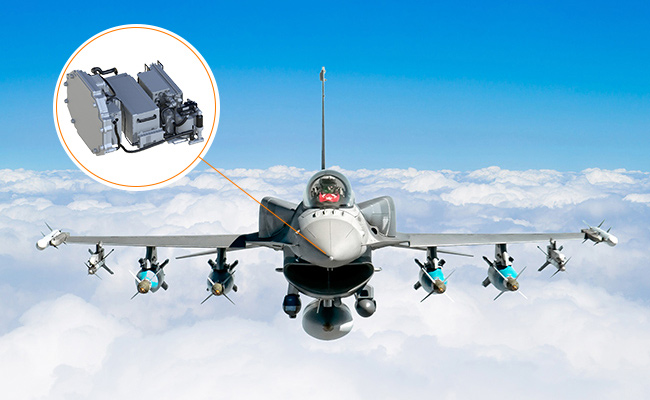

 In
the fast-paced world of military aviation, technological advancements often
determine the balance of power. One of the most significant developments in
recent years is the integration of Active Electronically Scanned Array (AESA)
fire control radars on fighter jets and UAVs. This innovation is reshaping
aerial combat, enhancing situational awareness, and solidifying air superiority
in an increasingly complex battlefield.
In
the fast-paced world of military aviation, technological advancements often
determine the balance of power. One of the most significant developments in
recent years is the integration of Active Electronically Scanned Array (AESA)
fire control radars on fighter jets and UAVs. This innovation is reshaping
aerial combat, enhancing situational awareness, and solidifying air superiority
in an increasingly complex battlefield.
Advantages Over Mechanical Systems
ASELSAN’s
AESA Radar System MURAD 110-A, which
represents a leap forward from traditional radar systems, uses a grid of
thousands of tiny transmit/receive modules, unlike mechanically scanned radars
that rely on moving parts for antenna beam steering. This allows for rapid and
simultaneous tracking of multiple targets, providing pilots with enhanced
situational awareness. The result is not only improved detection capabilities,
but also the ability to engage multiple threats with a high precision.
The
implications of this technology are profound. In air-to-air combat, where
split-second decisions can mean the difference between victory and defeat, the
enhanced tracking and targeting capabilities of MURAD 110-A Radar offers a significant advantage. Pilots equipped
with these systems can identify and engage enemy aircraft with remarkable
accuracy, even in the presence of electronic countermeasures designed to
obscure radar signatures. This edge is critical in modern warfare, where
stealth and speed often dictate the outcome of engagements.
AESA Fire Control Radars: A New Era in Air-to-Air and
Air-to-Ground Missions
In
the air domain, AESA radar is the heart of 5th generation fighter aircrafts.
AESA radars allow for comprehensive situational awareness, enabling pilots to
detect and engage multiple targets at great distances. The ability to
simultaneously track and target various threats makes MURAD 110-A Radar indispensable for air superiority and precision
strike missions. The enhanced resolution and accuracy of MURAD 110-A Radar significantly improve interception capabilities,
ensuring that defensive measures remain effective in the face of sophisticated
threats.
The
use of AESA radars allows for effective ground surveillance and target
acquisition, making them invaluable in multi-role UAVs. This versatility means
that aircrafts equipped with AESA technology can adapt to a range of mission
profiles—from air superiority to ground support—without sacrificing
effectiveness.
In
conclusion, the integration of MURAD
110-A fire control radar into fighter jets and UAVs is a game changing
development in military aviation. As military forces continue to adapt to the
complexities of evolving threats, AESA radars stand out as a game-changer,
reinforcing their position as a critical asset.